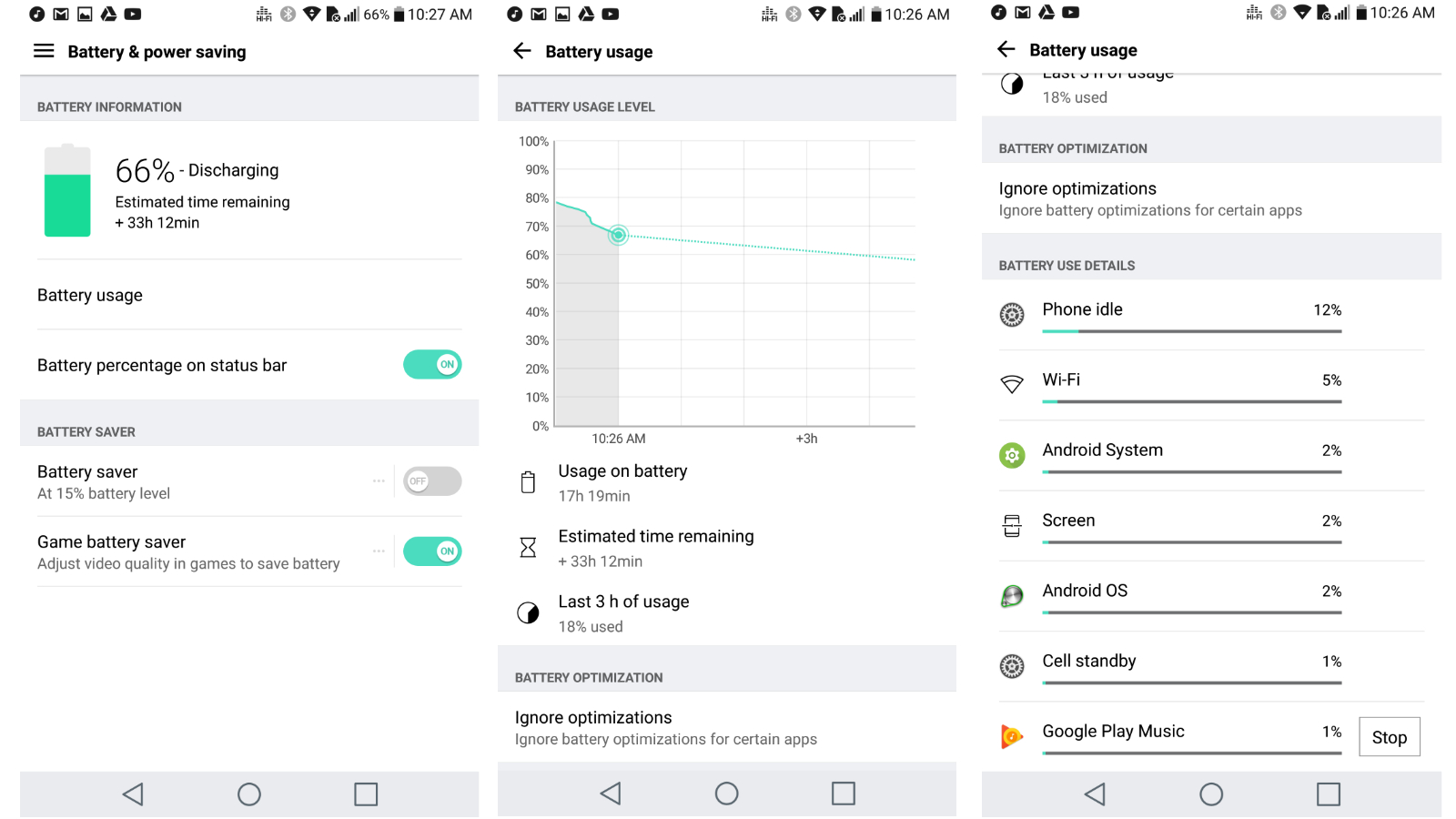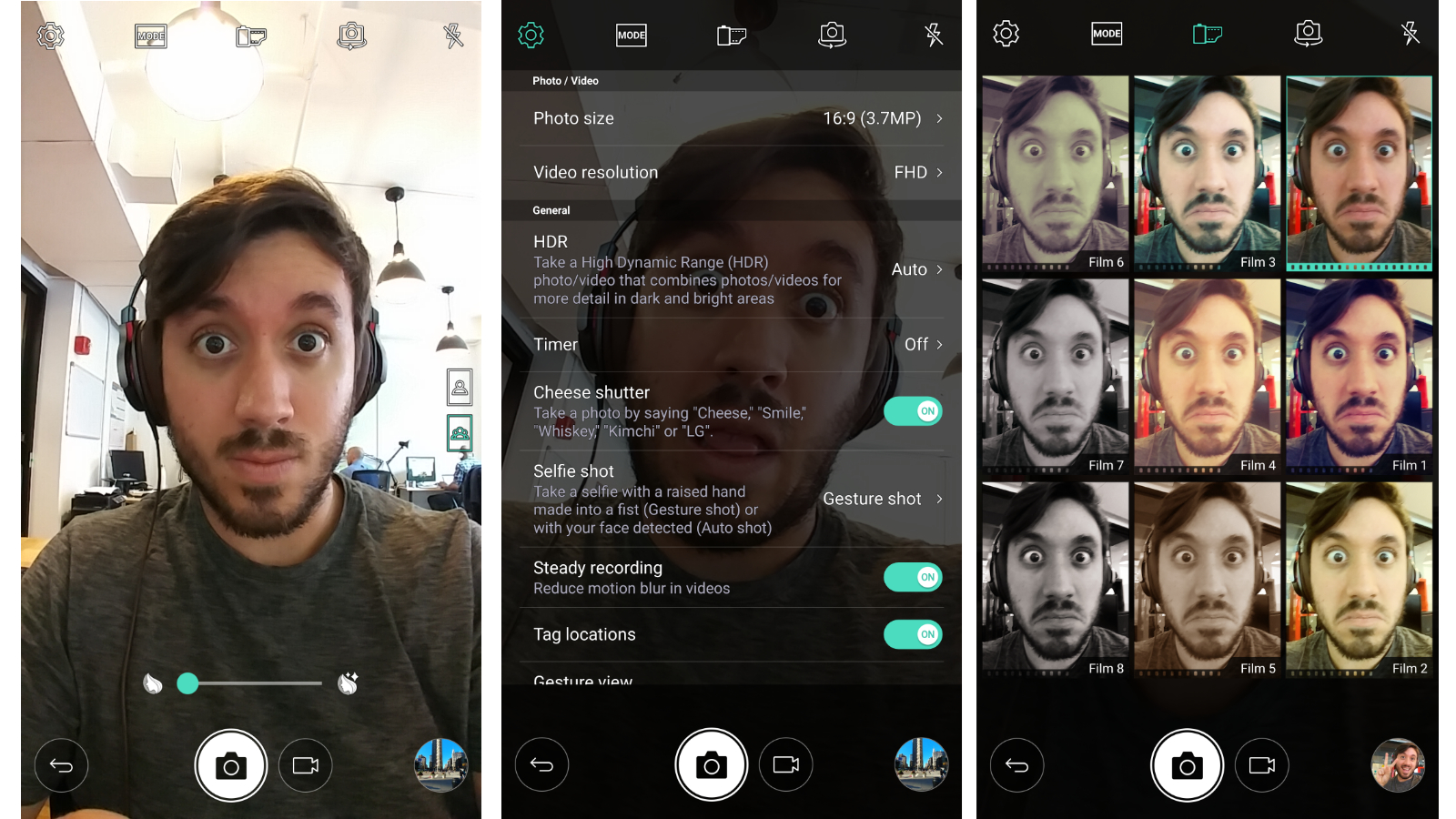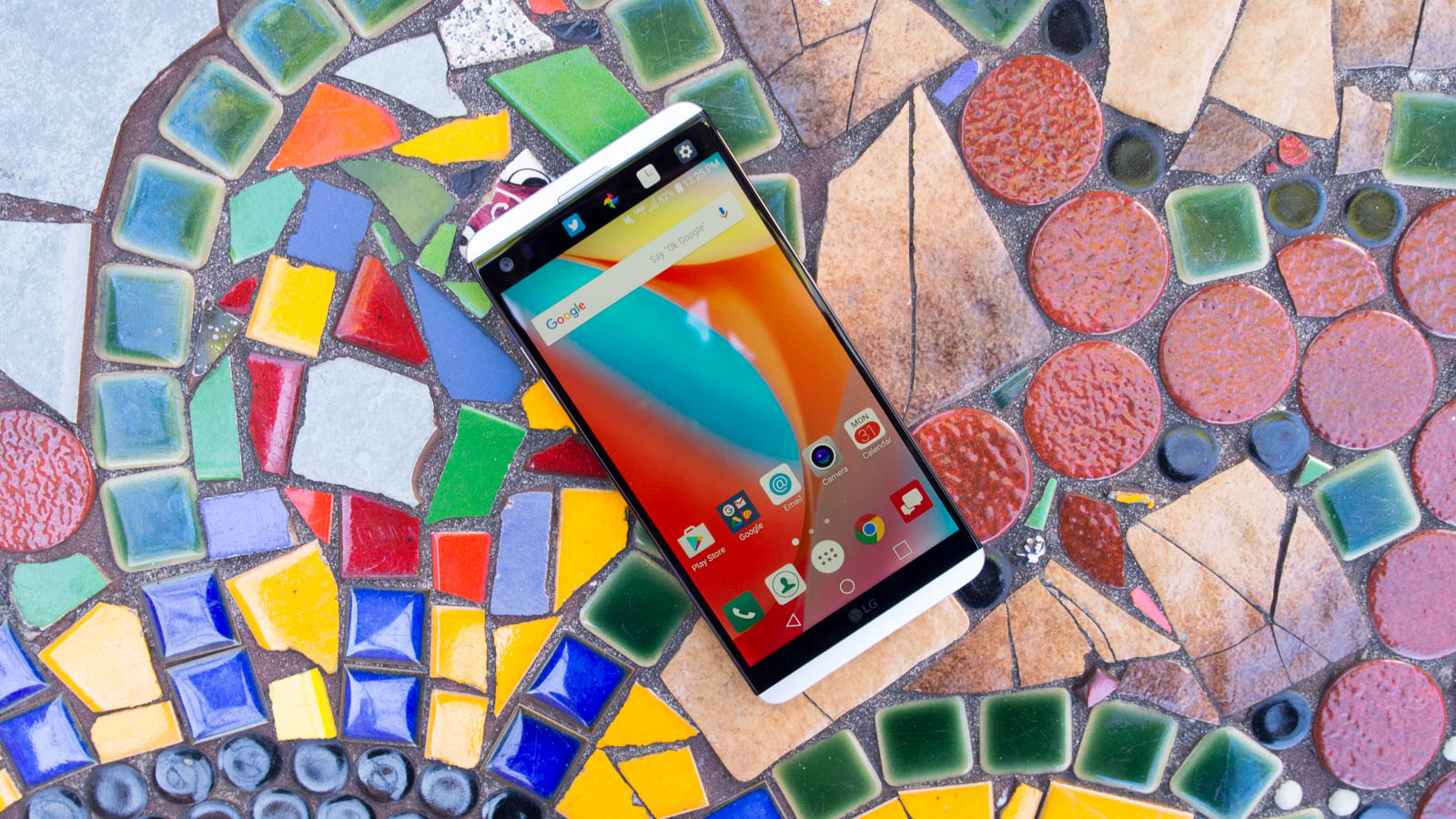Why you can trust TechRadar
- Battery life is average and will last about a day, depending on your usage
- QuickCharge 3.0 can fill up the V20 to 100% in just over an hour
- Wide-angle shots aside, the unique camera features don’t live up to the hype
The LG V20 comes with a 3,200mAh removable battery, which is a smidge bigger than the one found in the V10 and the LG G4. Equipped with Nougat’s enhanced Doze mode, we found that this phone more efficiently discharges throughout the day in your pocket than a phone running on Android Marshmallow, which only Dozes at night.
We tested the V20’s battery drain rate by utilizing the phone’s normal features along with its noteworthy ones, like the second screen, Hi-Fi sound mode and its cameras. At most, the V20 lasts well over a day with mixed use, but if you’re really going hard with photo and video-taking, listening to Hi-Res audio tracks and playing games, the V20 - like any modern smartphone - will suffer more quickly. For example, our 90-minute HD video test drained the battery down to 71% with Hi-Fi audio mode switched on.

On the flipside, If you leave it sitting, this phone easily lasts a few days without needing a charge. But when it’s in need of one, QuickCharge 3.0 support helps it get back on its feet quickly. After we zeroed-out the V20’s battery, it only took a half hour to bring it up to the 50% mark. But it took around 80 minutes to fill the battery completely.
Camera
Shifting focus over to the camera, LG’s software is essentially the same (read: excellent) as you’ll find in its other recent phones. All the settings you’ll commonly utilize, like photo effects, flash and the front-to-rear camera swap button, are easy to find. What’s more, the easy camera swap gesture is back, along with the quirky vocal cues to snapa photo, like “Cheese!” or “Kimchi!”.
LG has made good use out of the second screen here, making it home to the high-level options for the camera app, like switching between auto and manual for taking pictures or videos.
While things haven’t changed all that much on the software side of things, its hardware, on the other hand, has. The main rear-facing sensor still shoots at 16MP, with an aperture of F1.8, but is now joined by an 8MP sensor with an aperture of F2.4 that is dedicated to shooting 135-degree wide-angled images.
As you might expect, the main lens, with its more robust specs, can provide more low-light detail - but not by much. Although the wide-angle sensor has a lower megapixel count and higher aperture, we found that the images it turned out were oddly more expressive, with better contrast and lighting.
LG stated that it has made significant improvements to its laser detection auto-focus to fine-tune its operation for low-light shooting. The rear lens is also said to take advantage of phase detection and contrast auto-focus techniques to ensure that the image or video is consistently clear.
Unfortunately, none of these improvements can easily be seen in the V20. In our experience, it isn’t particularly skilled at making regular on-the-go shots, whether it be an image or video, look like an instant classic in the way that the Google Pixel or Samsung Galaxy S7 can. However, if you can afford invest time in the manual settings, you can definitely work out a nice shot.

On the front, there’s a single 5MP lens, with an impressive F1.9 aperture - an improvement from the V10’s F2.2 front-facing camera. The selfie cam here one-ups the LG G5 with its wide-angle (120-degree) images in case you want to include a group of friends in a selfie or squeeze in an impressive vista. Again, the wide-angle effect is awesome here as well, but the image quality is only passable.
If you’re someone who likes to shoot video, LG has you covered with 4K and 1080p video recording support. Additionally, LG has improved its Steady Record feature that it debuted in the V10. Steady Record 2.0, as it is being called, utilizes gyroscope-based electrical image stabilization and digital image stabilization.
The idea is that you’ll get silky smooth video, even with the V20 being slightly shaken during the recording. However, it’s a let-down that Steady Record 2.0 will only kick in for FHD (1080p) video recording at 30FPS - and that it doesn’t really seem to work at all. We’ve provided a few clips below of Steady Record 2.0 in action - one during the day and one at night.
Oddly, we found that the Nexus 6P, which contains no image stabilization measures whatsoever, provided better results.
Here are a few photos taken with the front and rear cameras.









Here are a few more video samples from the LG V20. The first is a 60FPS FHD sample, while the second is another try at Steady Record 2.0. Lastly, the third sees the V20 faring decently at recording in a dark environment.
Cameron is a writer at The Verge, focused on reviews, deals coverage, and news. He wrote for magazines and websites such as The Verge, TechRadar, Practical Photoshop, Polygon, Eater and Al Bawaba.

